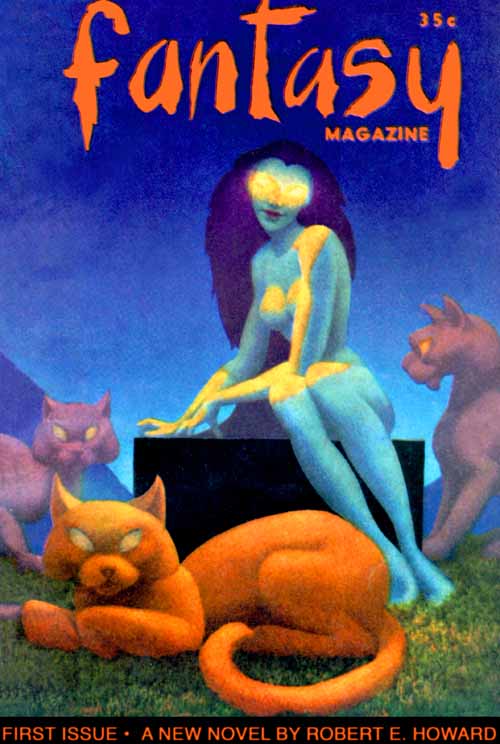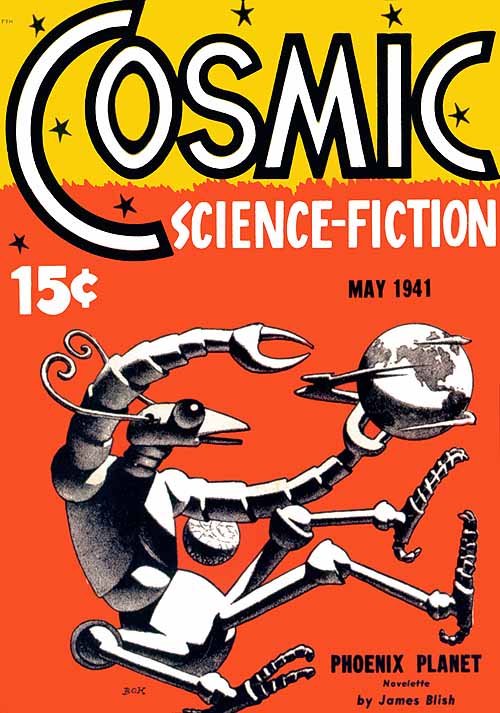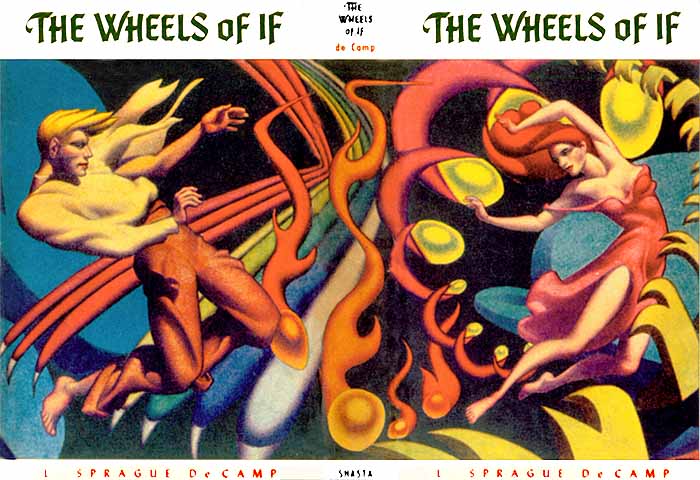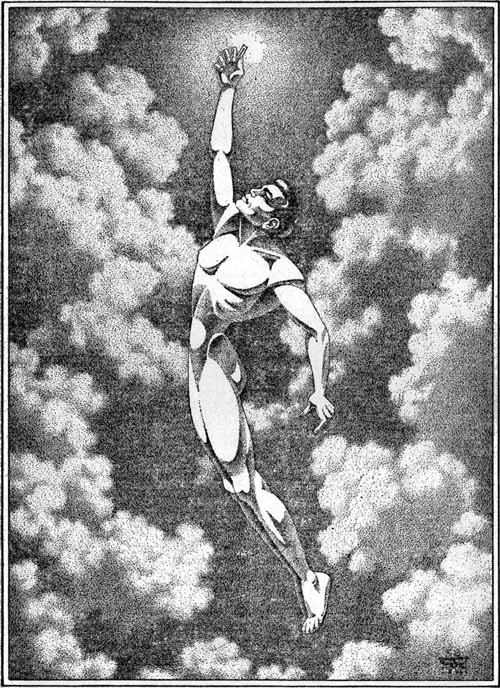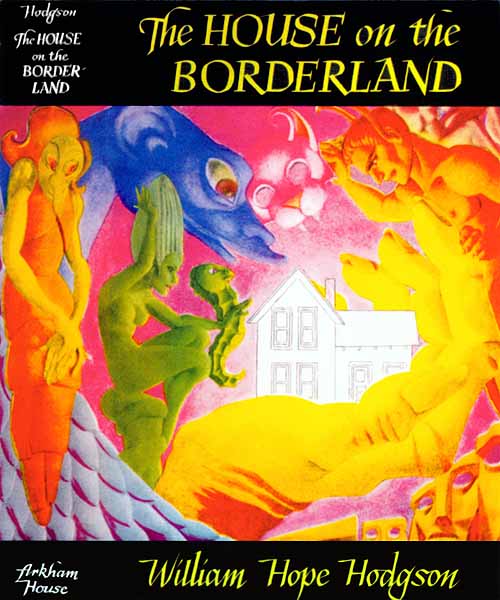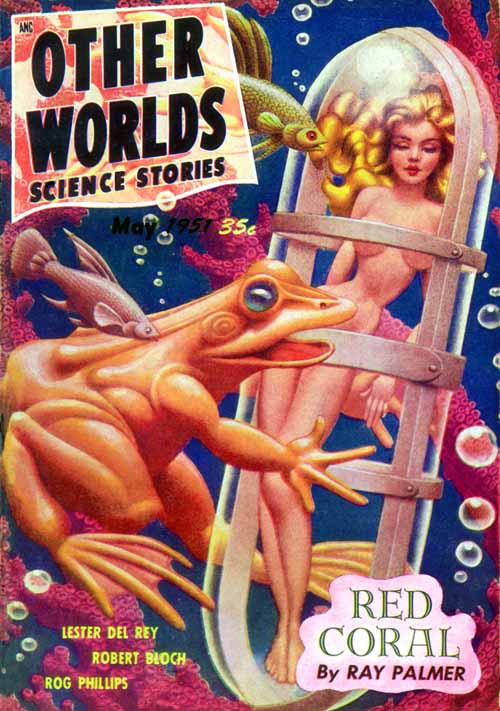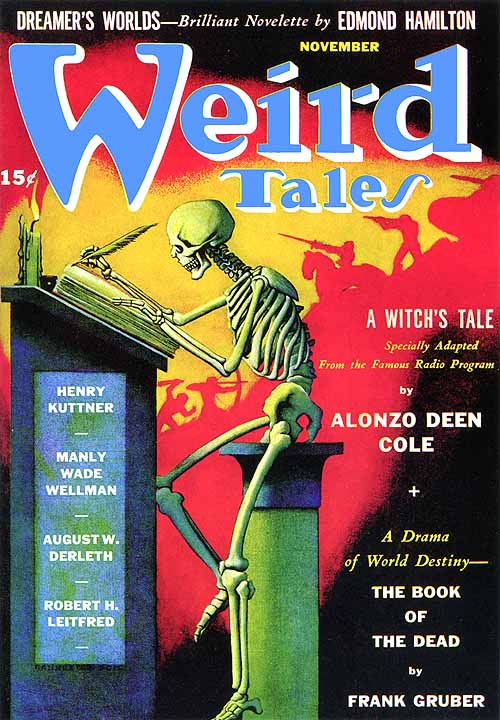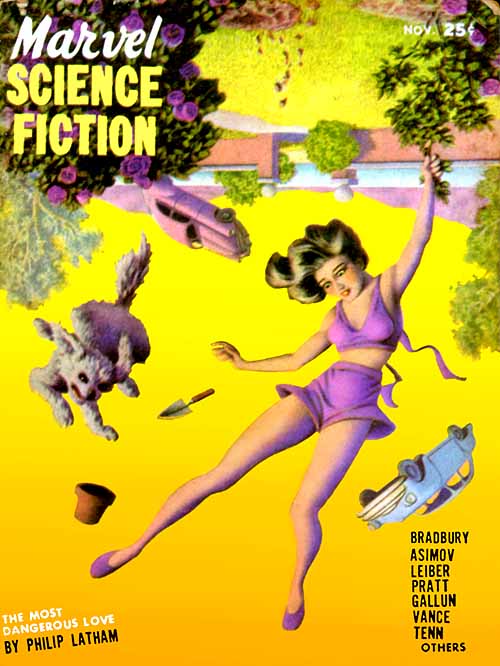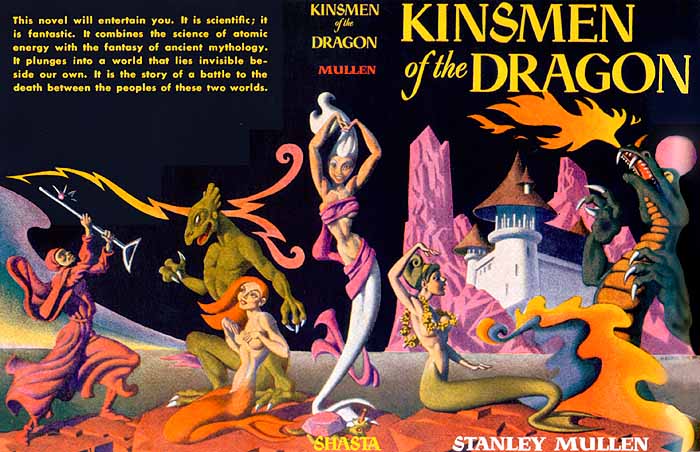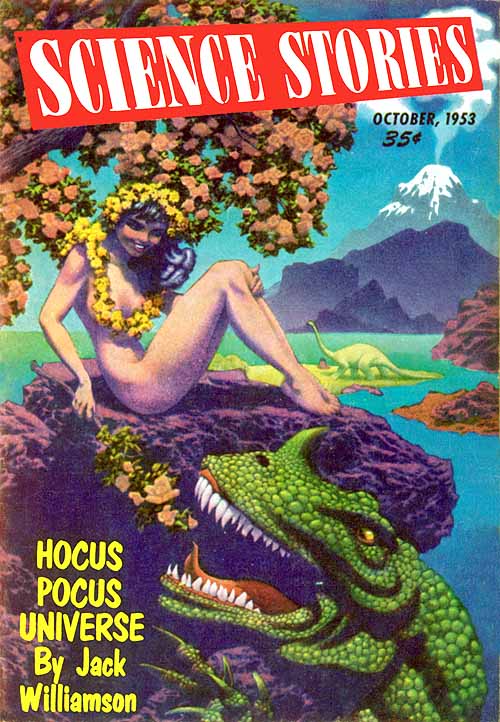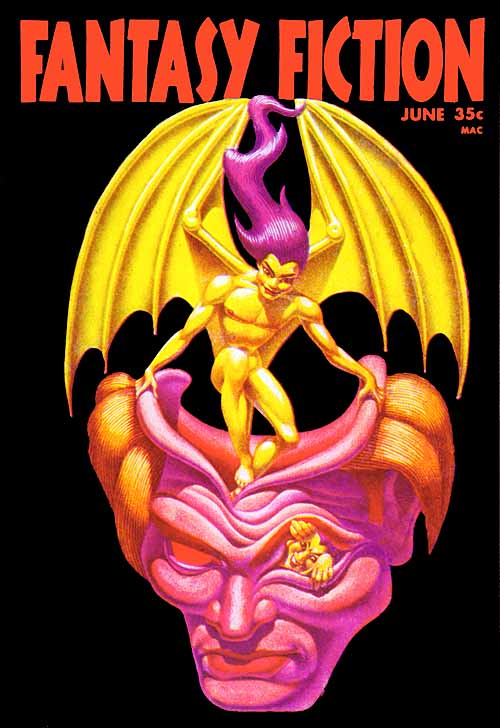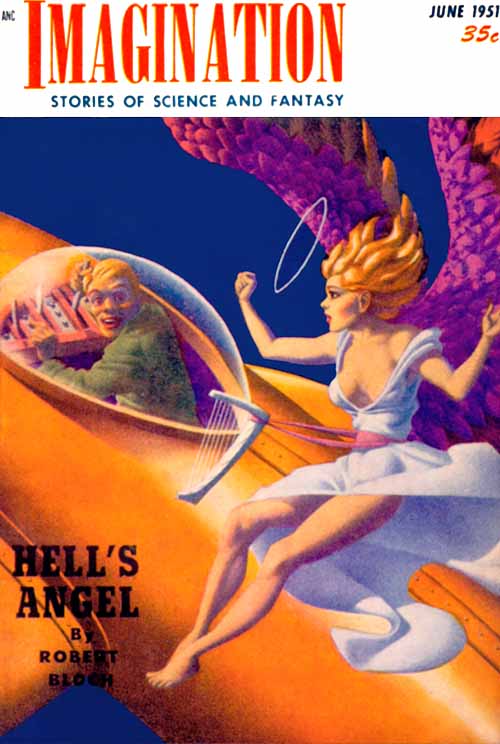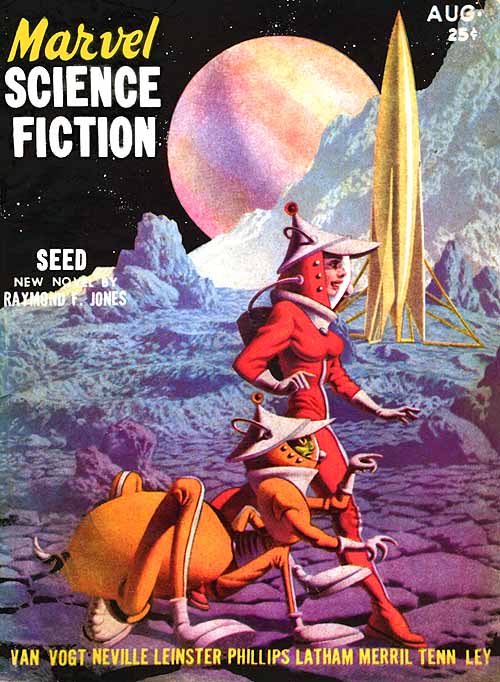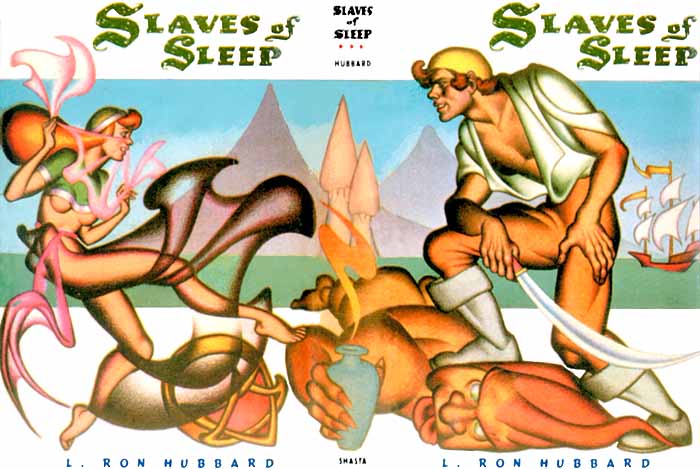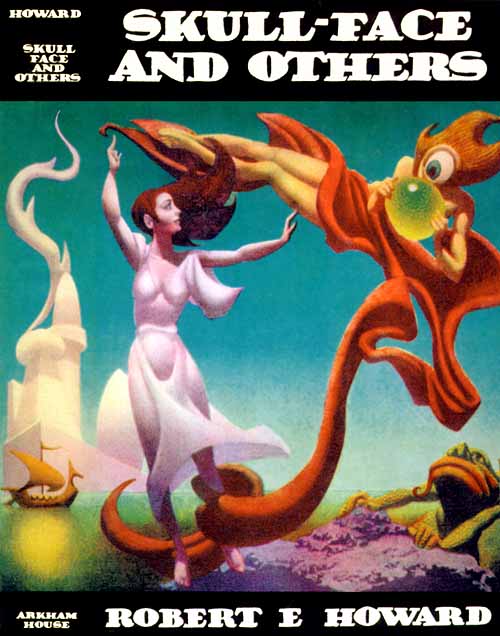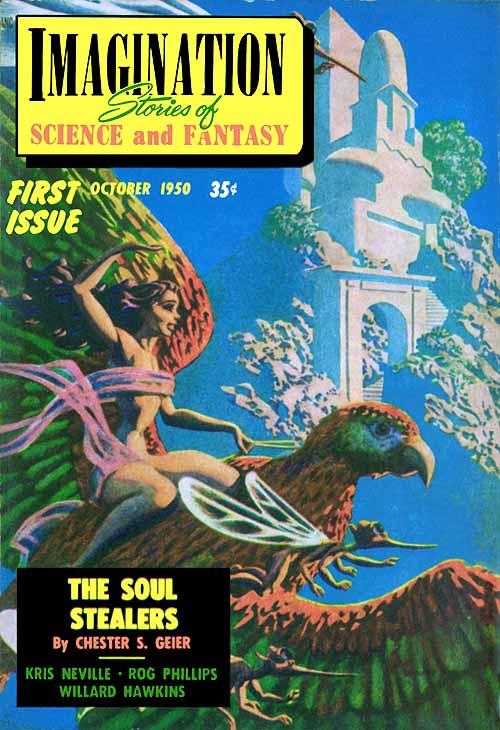
|
American Art Archives scans and text are copyrighted material. |
|
Back |
|
Hannes Bok
(1879 - 19??)
A Fan's Perspective by Mark Radcliffe |
|
Fantasy, No 1 (1953) Bok - 001
|
|
In 1971, 1 was working part time at a used memorabilia bookstore in Hollywood. While throwing out some damaged magazines, a 1917 Century Magazine caught my attention. There was an ad for Edison Mazda lamps in full color. It depicted a woman sitting on a bolder by a tree with these beautiful, jewel-like colors. The artist was Maxfield Parrish. Shortly after that, the cover to Imagination's Oct 1950 issue had me transfixed. Here was this brightly colored painting of a woman riding a large Parrot. The artist's style was reminiscent of Maxfield Parrish. The artist, 1 found out, was Hannas Bok 1 attended the 1971 Science Fiction convention in San Francisco where I met Bok's long time friend, Emil Petaja who, in 1968, founded the Bokanalia Foundation. He introduced me to Underground cartoonist Trina Robbins. She explained that while she was in New York, Bok used her face as a mold for one of his masks. Bok’s mask work was influenced by W T Benda, a popular illustrator of the 1920s and 30s. Benda did exotic covers of beautiful women. You can observe Benda's influence in Bok's black-and-white pulp illustrations from the 1940's. Benda was also a skilled mask maker and wrote a book on the subject, Masks, in 1944. |
|
Cosmic Science Fiction (1941) Bok - 002
|
|
The Wheels of If (1948) Bok - 003
|
|
Science Stories, "Hocus Pocus Universe" (1953) Bok - 004
|
| Also in ‘71, I attended the Los Angeles Science Fiction convention, where 1 met a group known as “The Dinosaur Club.” The club had many Sci-Fi writers who knew Hannas Bok. 1 talked with Clark Aston Smith who brought a few color preliminary studies by Bok of the Weird Tales cover from July of 1941 titled, “The Robot God.” These roughs were done in crayon as Bok couldn't afford to do studies in oils. While visiting Emil in San Francisco, he showed me a Bok painting of a sunset in bright, beautiful oranges, reds, and blues. The “canvas” was a piece of rusted metal. Emil pointed out that during the Depression, Bok shared a shack with a bunch of cats at a Seattle dump and that the artist was so poor he painted on whatever flat surface he could find. |
|
The House on the Borderland (1946) Bok - 005
|
|
Other Worlds Science Stories (1951) Bok - 006
|
| According to conversations with Emil Petaja and reading his bio, Flight of Angeles, 1 learned Hannas Bok was born, Wayne Woodard in 1914. He was the product of a divorced home and a stern father. Hannas left home in his teens, hitchhiking around the county during the early days of the Depression. Although he was a self-taught artist and a rigorous task master as his own teacher, Bok got some help from one of his idols, Maxfield Parrish. He visited Parrish’s New Hampshire farm in the mid-1930s and corresponded for some years thereafter. Learning of Bok's poverty and impressed by what Bok so eagerly showed him, Parrish gave Bok an expensive set of oil paints and brushes to help the teenager fulfill his obvious gifts. Bok has been accused of copying Maxfield Parrish. There is an influence obviously in some of his work but Bok merely used Parrish's techniques as a springboard. |
|
Weird Tales (1941) Bok - 007
|
|
Marvel Science Fiction (1951) Bok - 008
|
|
Kinsmen of the Dragon (1950) Bok - 009
|
| Bok's technique was the same as the old masters' using a series of glazes, one color applied at a time with a thin coat of shellac between each color. He became friends with fine art painters Morris Graves and Mark Tobey while working with the WPA art project in Seattle. He learned avidly, everywhere he went. Bok met Emil Petaja in 1936 and did 10 illustrations for Petaja's chapbook, Brief Candle. This was the artist's first book publication. In 1937-1938, Petaja and Bok shared an apartment in Los Angeles. There they attended the meeting of the Los Angeles Science Fiction Society, where they met Ray Bradbury. In 1939, Ray Bradbury went to New York for the first Science Fiction Convention. He acted as Bok's art agent, showing his work to the fantasy pulp publishers of the day. |
|
Science Stories (1953) Bok - 010
|
|
Fantasy Fiction (1953) Bok - 011
|
| Farnsworth Wright, editor of Weird Tales, liked Bok's samples and commissioned him do a cover and interior drawings for the December 1939 issue, Bok's first paid work. Bok moved to New York to be close to the pulp publishers. The pay for a pulp illo was $ 5.00. This rate of pay lasted until the 1950s. Bok wasn't interested in acquiring money or fame, he refused his many chances to attain them by pandering to art cliques and editorial masters. He worked his own way or not at all. Donald WalIheim expressed it well. ''Hannas Bok had integrity and as a result of his refusal to prostitute his work to the demands and criticisms of the unfeeling. He remained hungry, poor, kind, and genuine." Hannas Bok had created some 600 to 700 story illustrations, 150 pulp magazine covers, many dust jacket book covers and a 1946 lithograph set called the Power series. These paintings and illustrations were created largely from 1939 to 1963 |
|
Imagination Stories of Science and Fantasy (1951) Bok - 012
|
|
Marvel Science Fiction (1951) Bok - 013
|
|
Hannas Bok was more than an artist. He might be described as a true Renaissance man as he was a fine novelist, poet, lithographer, photographer, sculptor, mask maker, and ceramicist. As with many other creative geniuses, so it was with Hannas Bok, that when they're no longer with us we begin to take sharp notice of them. This is especially true of Bok. Hannas Bok lived most of his life in an art-treasure filled slum apartment in the heart of Manhattan. He was a lonely hermit in one of the busiest of cities. Although he made many good friends early in his life and cherished them, eventually it came to the point that visitors to his ugly Eyrie were few and often unwelcomed. Out of disillusionment his youthful joy in life gradually turned bitterly inward. For the last ten years of his life he was a recluse among his dazzling art, his books, and his beloved music. After years of poor diet and bad health, he died alone at night of a heart attack in 1964. |
|
Slaves of Sleep (1948) Bok - 014
|
|
Skull-Face And Others (1946) Bok - 015
|
|
Imagination Stories of Science and Fantasy (1950) Bok - 016
|
|
Hannas Bok left behind a glorious heritage. In 2005, you can find a wealth of information about Bok on the internet and books. One is The Illustrators in America 1860-2000 by Walt Reed and a new book called Maxfield Parrish and the American Imagists. |
